California’s most widespread wild rose,
Rosa californica,
has no less romantic lore surrounding it than its foreign relatives. Franciscan
padres in California often referred to California wild rose in their diaries, even affectionately naming it Rose of Castile after their beloved roses of Spain. Unlike its Asian and European cousins, California wild rose needs no pampering and is one of the easiest California native roses to grow. Leaves and 2-inch blush-pink flowers emerge in spring, with an irresistible fragrance.
 Botanical name: Rosa californicaCommon name:
Botanical name: Rosa californicaCommon name: California wild rose
Origin: Native throughout California, except for the High Cascade Range and the High Sierra Nevadas
Natural habitat: Generally moist areas, especially stream banks; below 4,800 feet elevation
Where it will grow: Easily hardy to 0 degrees Fahrenheit (USDA zones 7b to 10b; find your zone)
Water requirement: Prefers moderate to regular water but is also somewhat drought tolerant; once it’s established, water can be reduced to every two to four weeks
Light requirement: Full sun on the coast; full sun to partial shade inland; performs best with at least half a day of sun
Soil: Adaptable
Mature size: 5 feet tall and spreading
Benefits and tolerances: Beneficial to birds and the mourning cloak butterfly; great planted with oaks; stabilizes slopes; tolerates clay soil
Seasonal interest: Flowers from spring to summer; rose hips follow from fall through winter
When to plant: Late fall is ideal; winter works well; spring is acceptable; summer can be challenging to all but the most experienced gardener.
Photo by Curtis Clark
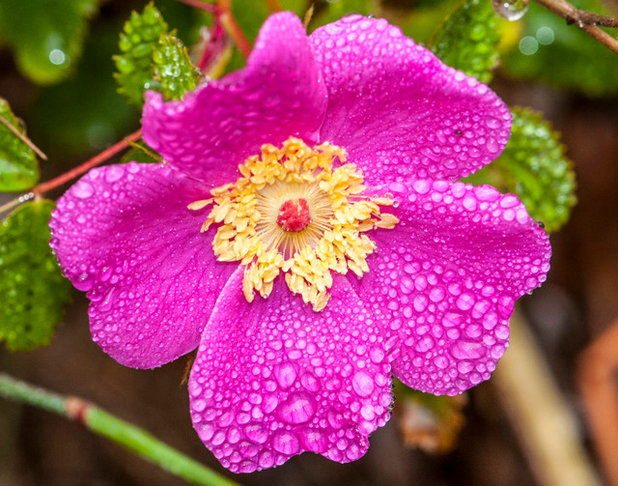 Distinguishing traits.
Distinguishing traits. Delightful and easy to grow, California wild rose forms a dense colony. Its thicket protects many of our cherished little critters. After a winter slumber, this deciduous plant produces endearing pink flowers that attract a number of pollinators. Following the flowers, from fall through winter, luscious rose hips are a bounty for wildlife.
Photo by Jerry Kirkhart
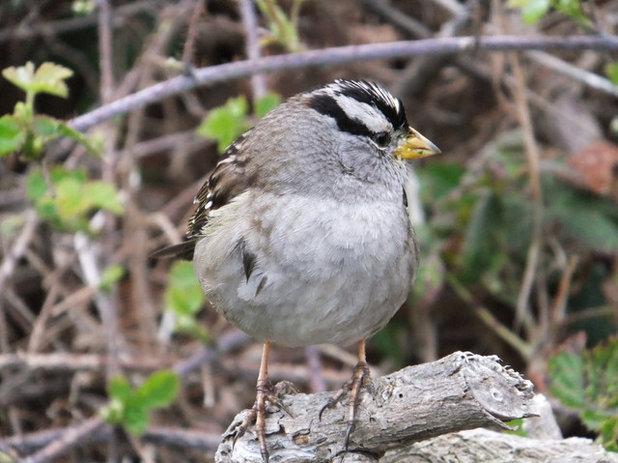 Wildlife value.
Wildlife value. With its abundance of thorns, our native California wild rose is a perfect sanctuary for wildlife. Birds, like this white-crowned sparrow, and other small critters yearn for safe places to hide. The dense thicket of tender roses and sharp thorns provided by California wild rose keeps out unwelcome guests, like cats and other predators.
Photo by Martin Jambon
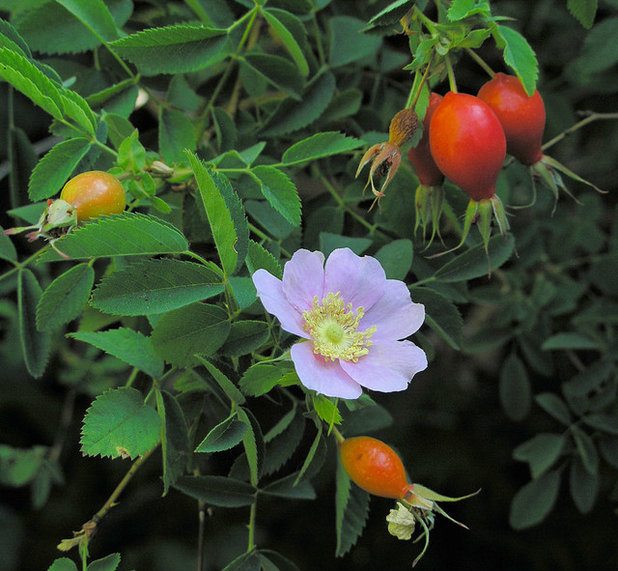
Bright rose hips that follow the flowers are high in nutrients and important to foraging wildlife — like birds and squirrels — during winter, when little else is available. Rose hips also make a delicious tea.
Photo by PKM
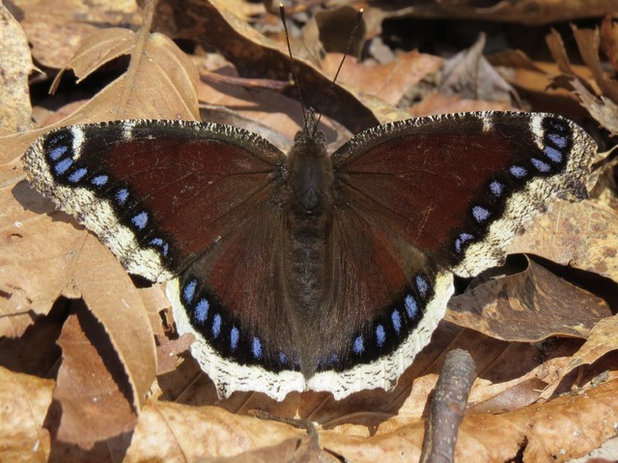
Mourning cloak butterflies, like the one shown here, lay their eggs on or near California wild rose. Don’t remove leaf litter until after the eggs hatch, to encourage these enchanting creatures.
Photo by Fyn Kynd
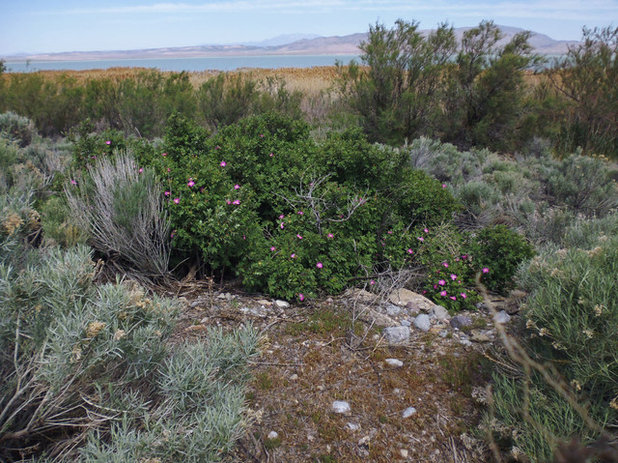 How to use it.
How to use it. Wild roses, like the Nootka rose shown here, form thickets of thorns that make a great barrier, screen or hedgerow. Give plenty of space in the garden where a colony can grow.
Combine California wild rose with other poetic plants with similar cultural needs, like giant chain fern (
Woodwardia fimbriata), pink-flowering currant (
Ribes sanguineum), Oregon grape (
Mahonia aquifolium) and western mock orange (
Philadelphus lewisii).
Photo by Andrey Zharkikh
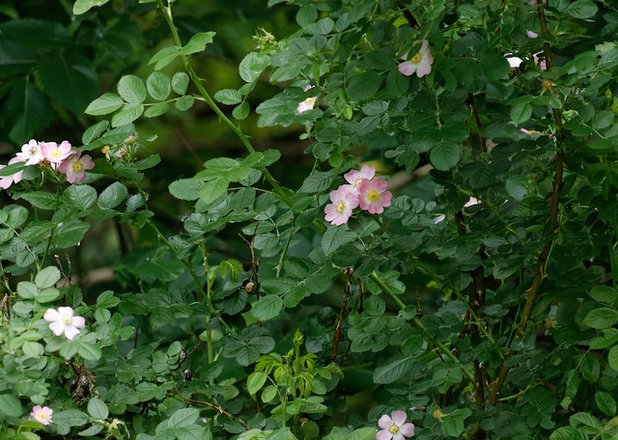 Other Species Wood rose
Other Species Wood rose (
Rosa gymnocarpa): Not drought tolerant, preferring low to regular water. Pale pink flowers arrive in spring on arching branches 3 to 5 feet tall.
Photo by Jean-Marie Van der Maren
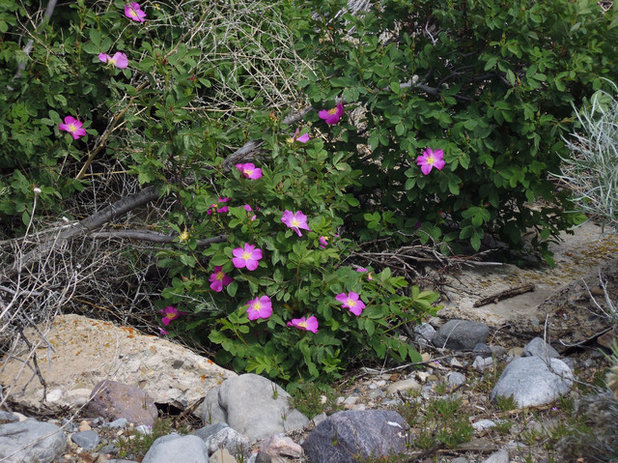 Nootka rose
Nootka rose (
Rosa nutkana): This rose has a spicy fragrance and displays splendid large flowers on spreading 5- to 6-foot tall branches. It’s not drought tolerant, but a summer drink every two weeks once it’s established should suffice. Nootka rose is more fungus resistant than California’s other wild roses.
Photo by Andrey Zharkikh
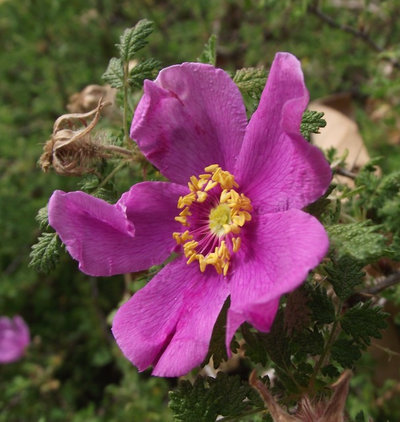 Baja littleleaf rose
Baja littleleaf rose (
Rosa minutifolia): The most drought tolerant of all the California native roses, this plant drops its leaves from 2- to 4-foot-long branches in summer and stays dormant until the first rain. Baja littleleaf rose was previously found in San Diego County and Baja California, but now is found only in its natural habitat of northwestern Baja.
Photo by Stickpen
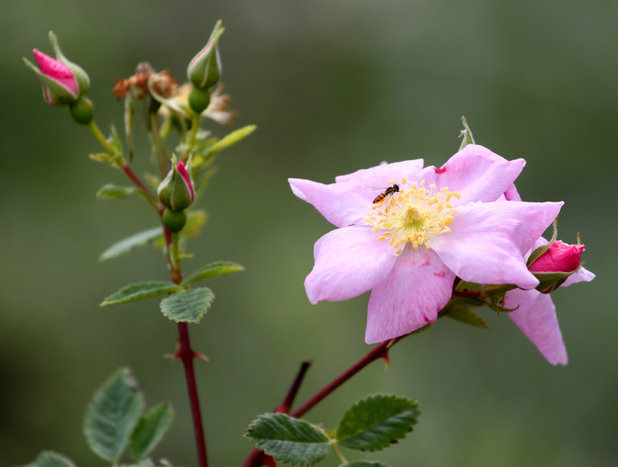 Planting notes.
Planting notes. Although more robust and less fussy, California wild rose does have similar rust, mildew and pest problems as nonnative roses. Find a natural, or even homemade, remedy if it is needed.
To rejuvenate California wild rose, prune it to the ground (coppice) in late summer or fall.
Photo by Wintertanager





